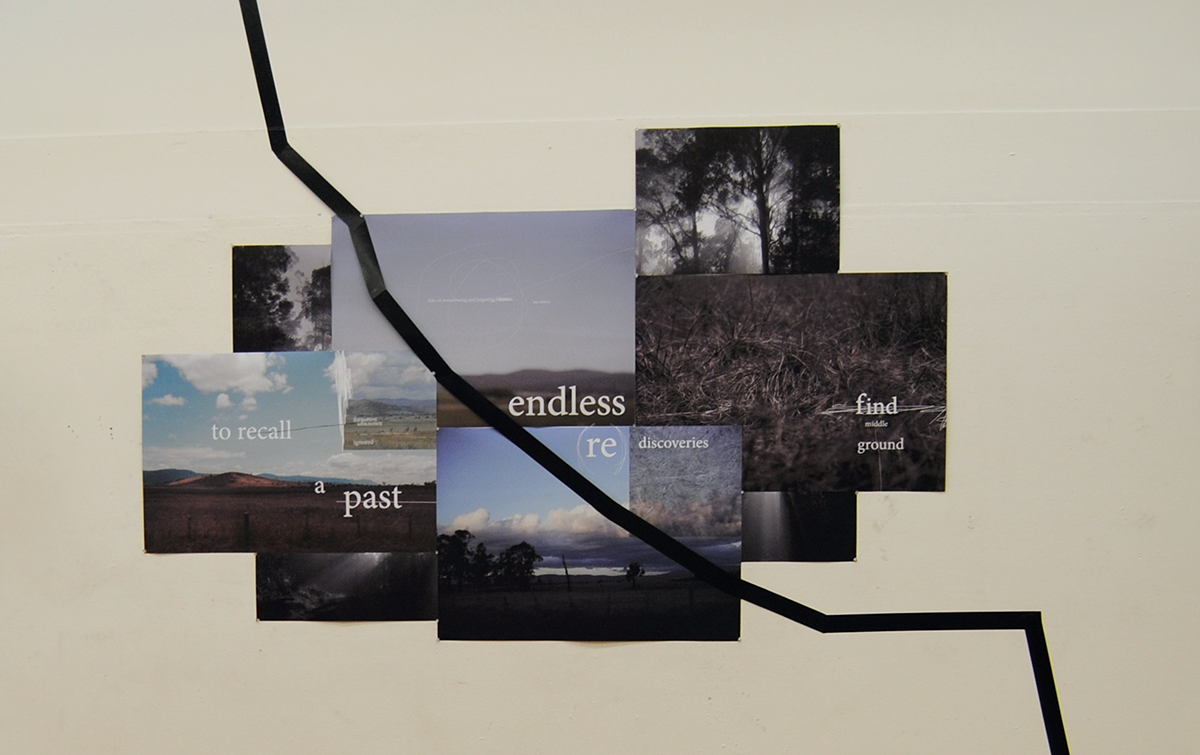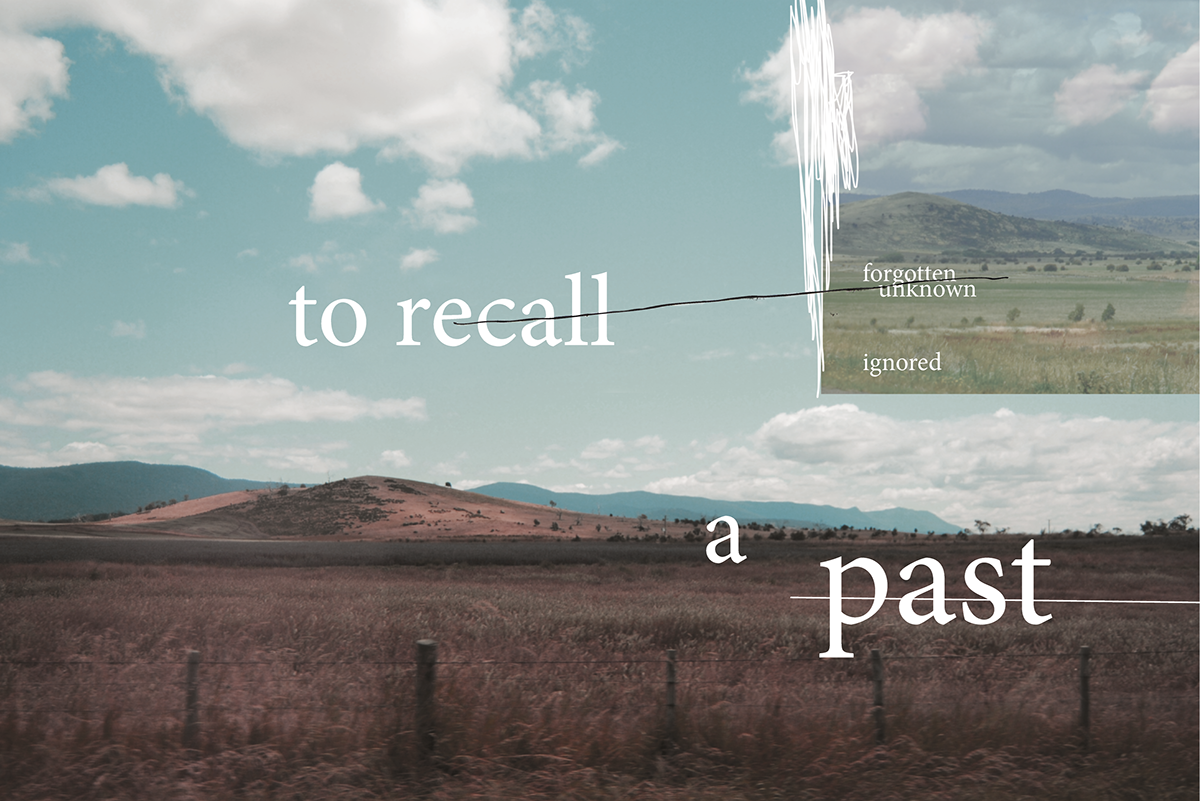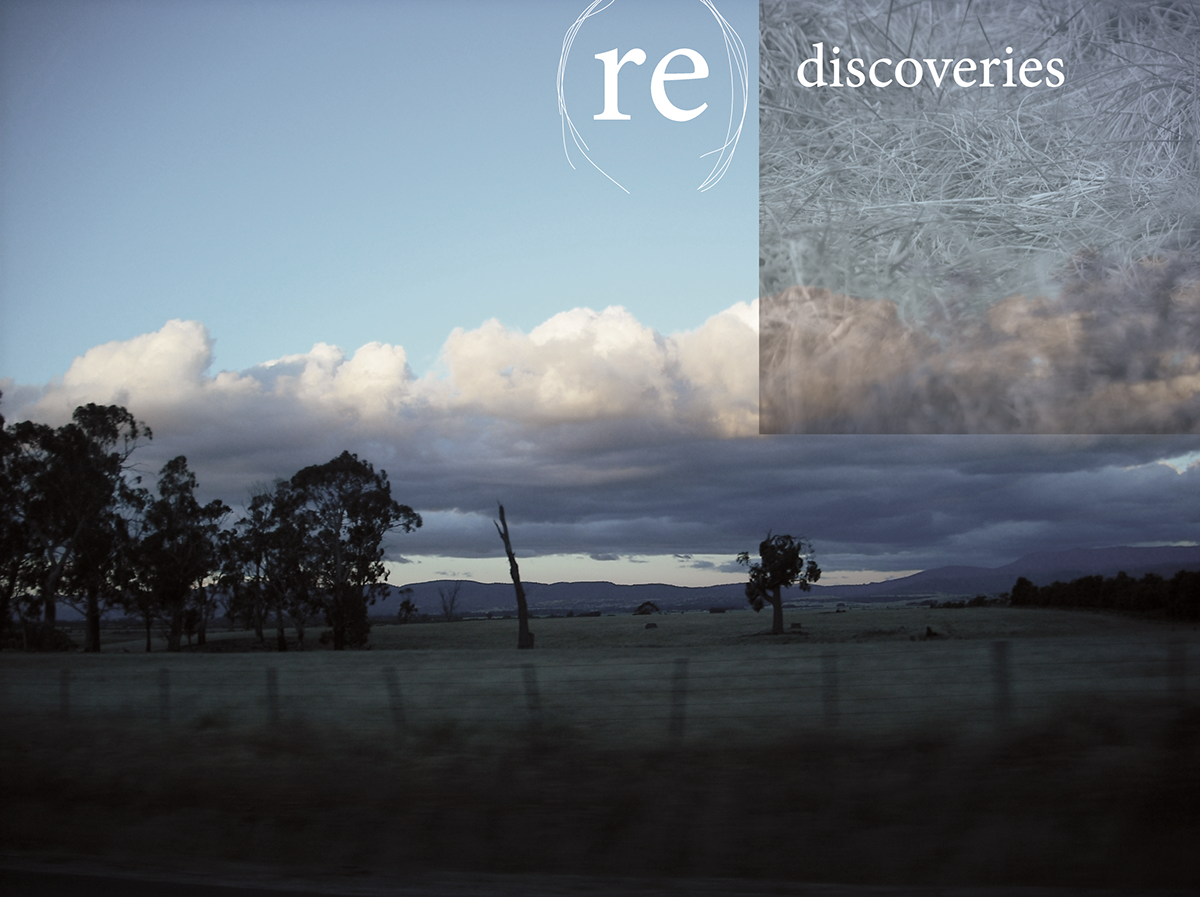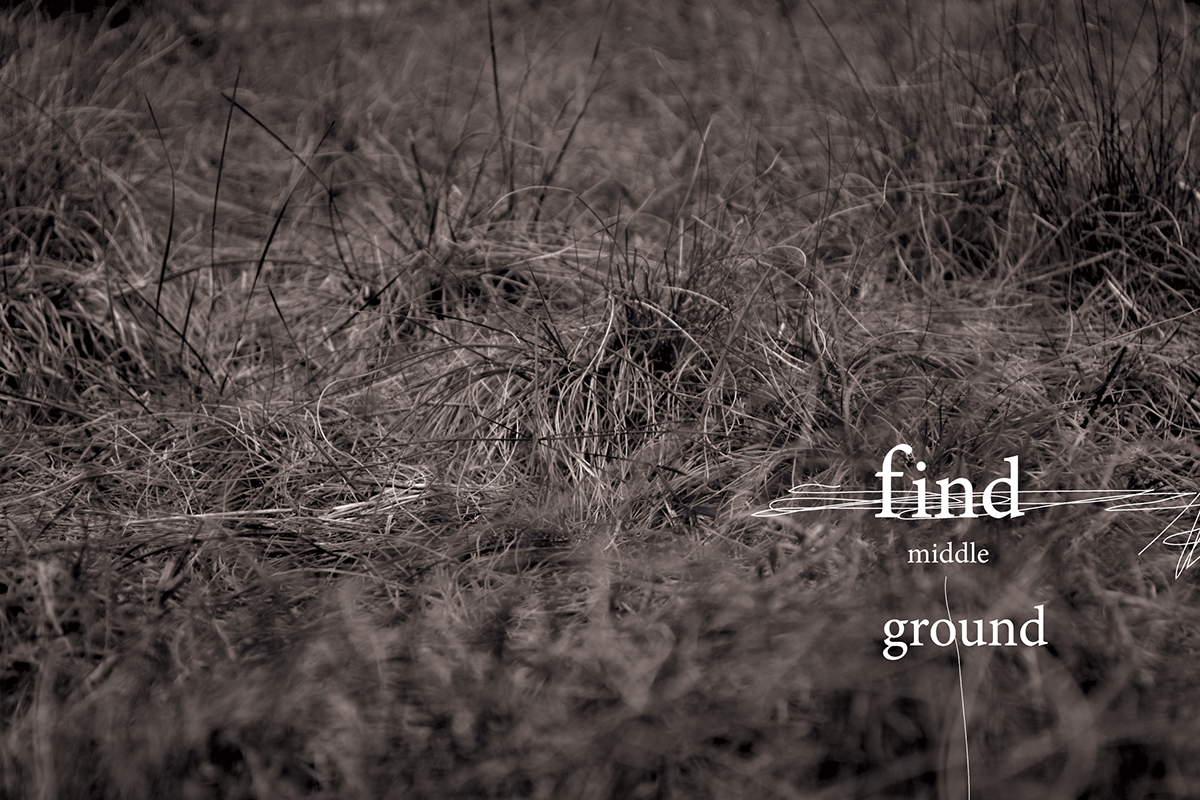Tasmania has long been acknowledged and portrayed as a vast ‘untouched’ wilderness. The popular myth or notion of Tasmania as idyllic and empty ignores the presence of Indigenous people on this land for thousands of years. Throughout my schooling, subjects on or teachings about Aboriginal people and their culture remained largely absent, instead history lessons focused on the arrival of the first fleet in 1788. From the beginnings of European settlement Aboriginal Tasmanians have experienced the ravages of war, dispossession, depopulation and denial of identity.
In 1830 the Van Diemen’s Land Government devised a plan whereby military forces formed a human chain across the settled districts to capture and exile the Indigenous population. A black line has been used both as a literal interpretation and a metaphor for the divide between Indigenous and non-Indigenous Australians. Upon entering the space the viewer is obliged to interact with the duct tape line as it interrupts the walkway, encouraging a conscious awareness of it. Out of this line emerges the term in 3D wooden letters; ‘Remembering Forgetting’, a central theme of recalling an existing past that has been constantly omitted by many Australians. The line zigzags across the floor and traverses the wall pervading a photomontage of the landscape this event passed through including the midlands. The line travels up and over the wall evoking the persistence of misunderstanding and ignorance that continues to shroud attempts for Indigenous equality and recognition.












